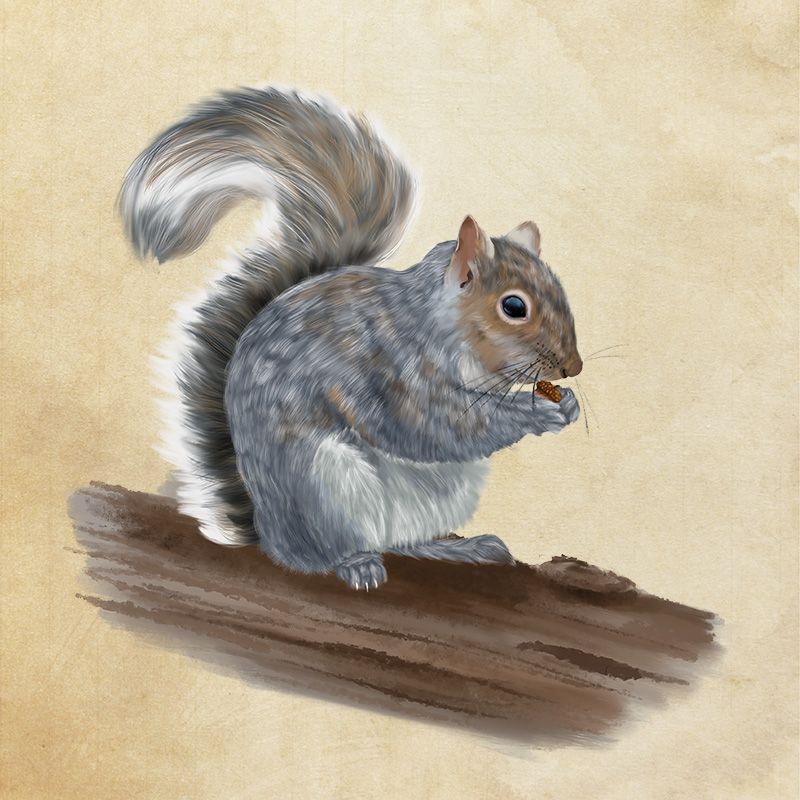Learn more about this familiar Carolina native

They are the most visible wild creatures in our midst, frequently seen scrambling up oaks, chattering from tree limbs, and raiding our bird feeders. Bright-eyed and bushy-tailed, the eastern gray squirrel (Sciurus carolinensis) is one of the most familiar rodents around. Spotted on city blocks and in our suburban backyards, they stay busy from dawn to dusk finding and burying food. Find out more about this native critter and its importance to the ecosystem
NATIVE SPECIES - The name ”Sciurus” is a combination of the Greek words, skia, meaning “shadow,” and oura, meaning “tail”—in other words, a squirrel sitting in the shadow of its tail. Carolinensis refers to Carolina, where the presence of this prolific species was first recorded in the early 1700s.
TREE HUGGER - Squirrels are as nimble in trees as they are on the ground. They build large, round nests called “dreys” out of dry leaves and twigs in the forks or hollows of trees and insulate them with moss, grass, and feathers. They also have the remarkable ability to climb down a tree headfirst—possible because the mammal can rotate its back feet so that its claws, pointing backward, can grip the tree bark.
CHITTER-CHATTER - Squirrels communicate by flicking their tails, as well as with a variety of chatters and guttural calls. Tail-flicking and the ”qua-a-a” call warn of danger; the purring ”muk-muk” sound is used by females during courting and by mothers with their kits. Communication varies by location. In noisy cities, they rely on visual signals, while in quiet wooded areas, they are more vocal.
EASY BREEDING - Does mate twice a year (early spring and mid-summer) and couple with multiple bucks each season. After 40 to 45 days, the doe bears an average litter of two or three kits, which are born hairless and with their eyes shut. The female solely cares for the babies until they are weaned, about 10 weeks later. While some squirrels in captivity have lived as long as 20 years, the average life expectancy for a suburban squirrel is two to six years.
SAVINGS PLAN - These scatter-hoarders bury food in small caches for later recovery. A single squirrel can hide several thousand caches each season. They have a highly accurate memory and use landmarks and their sense of smell to find the stored food. They’re also clever; if another squirrel is watching, they go through the motions of digging and covering, but scamper away with the food still in their mouths. The rodents eat seeds, nuts, and acorns, as well as tree bark and tree buds. Gnawing on bones, antlers, and turtle shells adds minerals to their diet. The process of burying food plays an important role in the forest ecosystem by helping disperse tree seeds.
BUSY, BUSY - The rodents are crepuscular, which means they’re usually more active during early mornings and late afternoons, avoiding the midday heat. They do not hibernate and are active year-round. Predators include hawks, raccoons, bobcats, foxes, cats, snakes, owls, dogs, and humans.